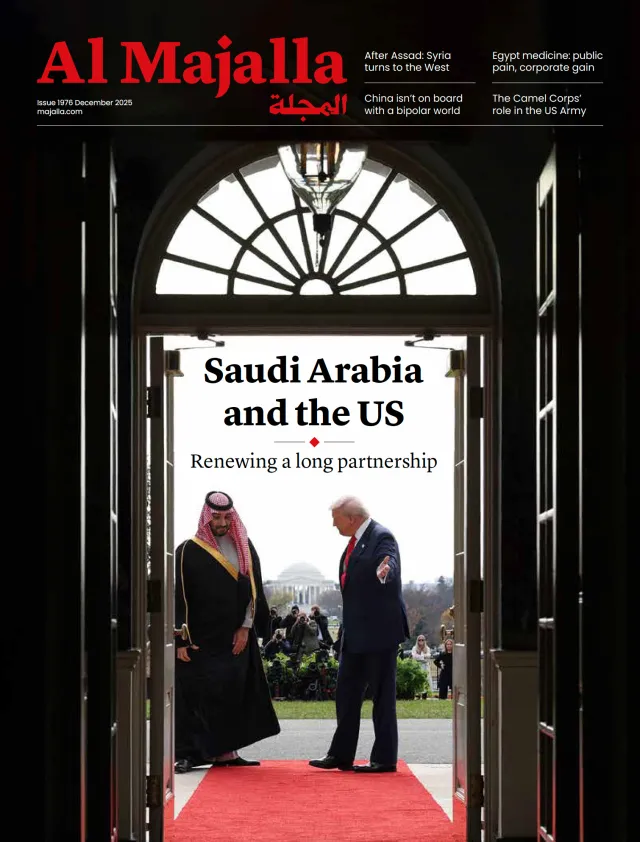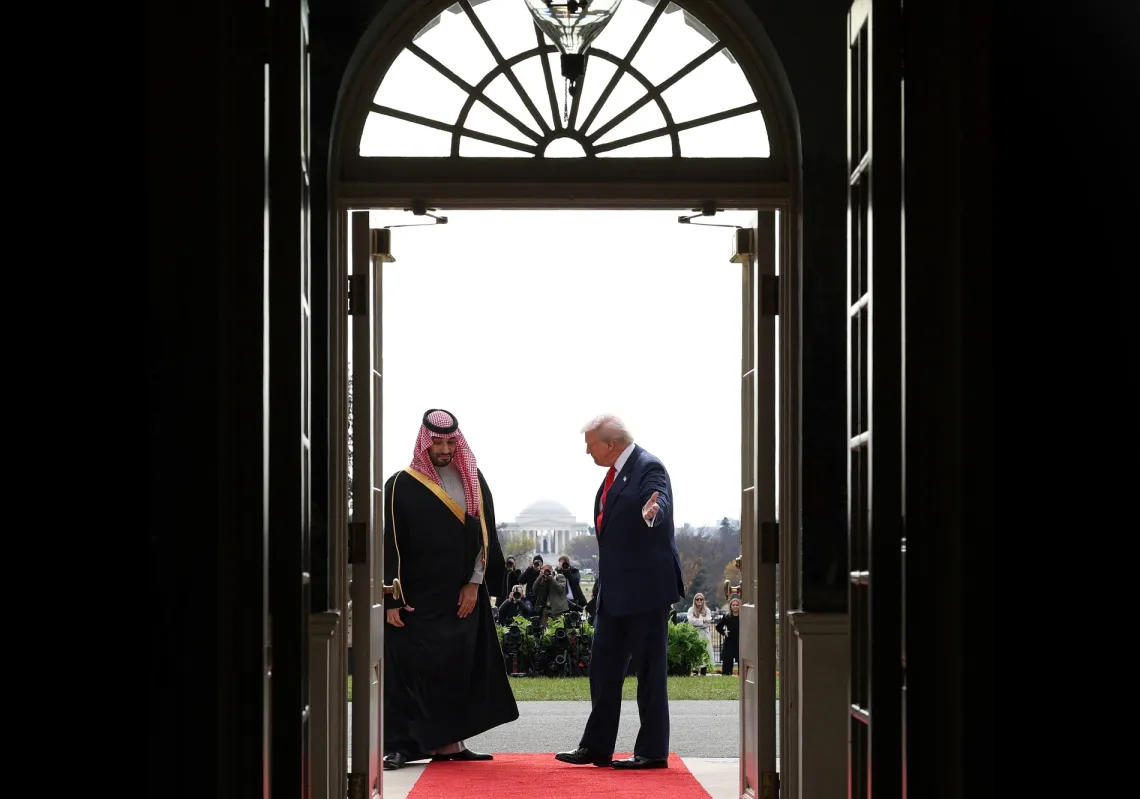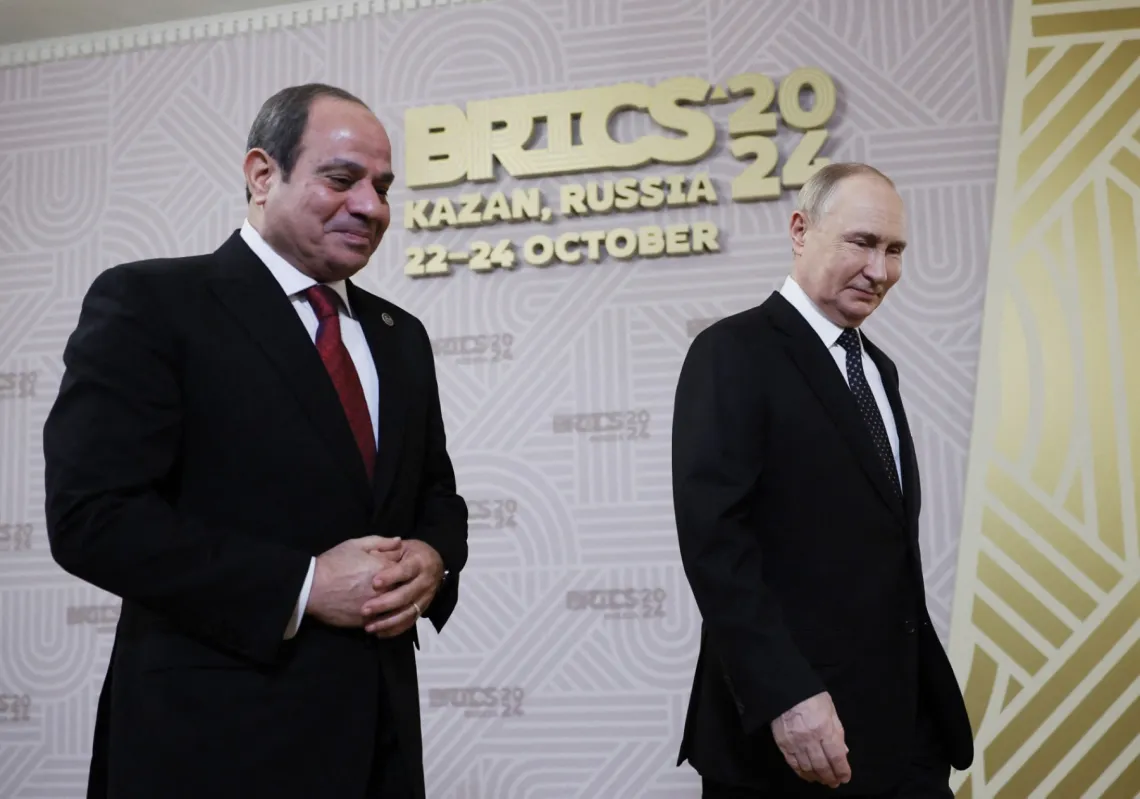US President Donald Trump’s announcement of his desire to establish a "Middle Eastern Riviera" in Gaza sparked a wave of criticism across the Islamic and Arab worlds, as it was accompanied by talk of displacing the region’s native population. Some media outlets reported that the US administration sought to relocate 1.5 million Palestinian citizens to Egypt, Jordan, and Syria, with each country taking in approximately 500,000 refugees.
It is against this backdrop that Al Majalla highlights a Syrian offer in 1949 to absorb Palestinians just weeks after Husni al-Za’im’s successful coup against Syrian President Shukri al-Quwatli. In the first round of direct Syrian-Israeli talks, al-Za’im offered to absorb 300,000 Palestinian citizens into Syria in exchange for financial and military support from the United States.
To put that in perspective, the Palestine War of 1948 uprooted 750,000 Palestinians and turned them into refugees, 160,000 of whom crossed the border into Syria, while the rest were dispersed across the Arab world. Of the number that came to Syria, 16,000 were settled in the Houran province, 70,000 in Damascus, and the rest spread among Syria's major cities. In other words, al-Za'im was willing to double the Palestinian population of Syria, up to 460,000.

Armistice negotiations
Under the auspices of the United Nations, armistice negotiations began on 5 April 1949 in the demilitarized zone on the Syrian-Palestinian border, just one week after al-Za’im's successful coup in Damascus. Fearing accusations of treason, he insisted that these talks were merely a tactical pause and did not signify an end to the war with Israel.
The Syrian delegation included Salah al-Din al-Tarazi, Secretary-General of the Syrian Foreign Ministry, and the three officers Muhammad Nasser, Fawzi Selu, and Afif al-Bizri. In later years, Selu would become Syria’s president in 1951, Bizri would become Chief-of-Staff in the late 1950s, and Mohammad Nasser served as director of the Homs Military Academy and then commander of the Syrian Air Force.
Tarazi was the sole civilian in the delegation, and he was one of Syria's brightest legal minds, educated at the Jesuit University of Beirut and the University of Lyon. He taught at the Faculty of Law at the Syrian University and held several diplomatic posts, including two stints as Syria’s ambassador to Moscow—first under al-Quwatli and later under Nureddin al-Atassi in the 1960s. He eventually served as ambassador to Türkiye before being elected to the International Court of Justice in The Hague, where he remained until his tragic death in 1980.
Despite their lack of personal rapport, al-Za’im insisted on Tarazi’s inclusion in the delegation to leverage his legal expertise and lend civilian legitimacy to his military rule and the negotiations with Israel.
The crux of the negotiations lay in al-Quwatli’s firm stance, documented in Syrian foreign ministry records, which rejected any concession of the Galilee region and the entirety of Lake Tiberias. Al-Za’im privately confided to US Minister James Keeley in Damascus that he was prepared to abandon al-Quwatli’s position, cede the Galilee, and share Lake Tiberias with Israel, giving it the western half.
Israel rejected the offer, however, as it desperately needed the waters of Tiberias—its sole water resource—to develop the Negev Desert. The two sides agreed on ceasefire lines that would also serve as armistice boundaries, running midway between their respective frontlines, with the area between Syria and Israel becoming a demilitarised zone. They also agreed to restore civilian life to the area and allow Arab residents to return to their villages under the supervision of Dr. Ralph Bunche, chairman of the Armistice Commission.
From April to July 1949, the Syrian and Israeli delegations held 19 meetings, during which Syria submitted 500 protest notes against the Israeli army's violations. Finally, the armistice agreement was signed on 20 July 1949, with future Israeli ambassador and historian Itamar Rabinovich describing it, in his book The Road Not Taken, as an "early recognition" of Israel by the Damascus government. That was three decades before Egypt’s recognition under Anwar Sadat in 1978.

Three-point proposal
Due to Salah al-Din al-Tarazi’s rejection of Israeli proposals and objections to its military violations, the negotiations stalled for a month in May-June 1949. During this period, Husni al-Za’im presented Israel with a comprehensive three-point proposal:
1. A summit meeting between him and David Ben-Gurion, to be held either in Damascus, Tel Aviv, or any neutral territory.
2. A peace agreement to end the ongoing conflict in the Middle East.
3. The resettlement of 300,000 Palestinians along the Euphrates River in northeastern Syria in exchange for US financial and military support.
This proposal stunned Israel and exceeded American expectations, revealing al-Za’im’s true objective behind the hastily initiated armistice talks. The armistice was merely a prelude to testing al-Za’im’s mettle, allowing Israel to assess his seriousness and ability to propose and implement creative solutions.
Al-Za'im's contemporary, Fakhri al-Barudi, then a member of parliament for Damascus, notes in his private papers that the US had offered $300mn in compensation for the 300,000 Palestinians he had offered to re-settle. But that he said was rejected by Za'im, who demanded no less than $400 million USD. In its initial response, however, the US State Department described Za’im as "humane in his approach and statesmanlike in his offer."
Al-Za’im sent an additional message to the Americans, requesting a formal proposal to establish military and air bases in Syrian territory to counter the spread of communism in the Arab world. If asked, he would promptly approve.
On 16 April 1949, al-Za'im summoned his foreign minister, Emir Adel Arslan, and said, "Let’s settle this issue with the Jews!" Surprised, Arslan expressed both astonishment and anger, prompting al-Za’im to whisper that he was under immense pressure to meet with Israeli Foreign Minister Moshe Sharett, inquiring whether Arslan was willing to undertake the mission. "We’re under great pressure to meet Sharett," he said. "We have no choice but to hold this meeting."

Al-Za’im proposed a meeting with Ben-Gurion or Moshe Sharett to pave the way for a comprehensive peace agreement. Ben-Gurion refused, stating that he would not meet with al-Za’im until Syria withdrew from its military positions, adding, "There will be no discussions on peace or cooperation until those borders are adjusted, after which we will be fully prepared to discuss everything." He further remarked, "I’m in no hurry; I’m ready to wait another ten years."
When Abba Eban, Israel’s UN representative, urged Ben-Gurion to accept al-Za’im’s offer, the prime minister replied, "I see no benefit in this meeting at present, as long as Syria’s representatives in the armistice talks do not explicitly declare that their forces will return to pre-war positions." He would later add: "Israel must always ask itself before meeting any Arab leader: Does he truly represent his people? Farouk is Egypt, but who is Husni al-Za’im?"
One Israeli negotiator commented on al-Za’im’s proposal, saying: "The Syrians want to sign a direct peace agreement instead of an armistice and exchange ambassadors with us. Al-Za’im seeks control and believes this can only be achieved through the unification of Israeli and Syrian military efforts."
Al-Za’im sent Colonel Muhammad Nasser, a member of the Syrian delegation, to meet with Joshua Palmon, the Zionist Agency’s Arab affairs expert, with orders to arrange a meeting with Moshe Sharett. In this secret meeting, Ben-Gurion’s rejection of the Syrian-Israeli summit was conveyed, frustrating al-Za’im, who remarked, "There’s no point in any initiative if the foundation of negotiation isn’t give-and-take. When junior officials meet, they can’t offer anything without consulting their governments, and they usually demand more than is required. But when decision-makers meet, agreement becomes possible if demands are presented that cannot be refused."
The US State Department commented on the Syrian initiative, stating, "Husni al-Za’im wants to resolve the Syrian-Israeli issue honorably and peacefully so he can focus all his energies on Syria’s revival and development. He fears a military coup that could bring reactionary politicians to power, who would undo any agreement or negotiations with Israel."
Sharett in Damascus
In both Syrian and Israeli official accounts, no meeting between Husni al-Za’im and Moshe Sharett is recorded, nor is it mentioned in British, French, or American archives or in Sharett’s memoirs. However, many who worked with al-Za’im confirm that Sharett did indeed come to Syria to meet him—albeit in complete secrecy.
This was corroborated by Suheil al-Ashi, director of Aleppo police, Haitham al-Kilani, al-Za’im’s aide, and Sami Jumaa, a member of the Deuxième Bureau, who claimed to have seen Sharett himself while guarding al-Za’im at the Grand Hotel Bloudan in June 1949.
According to Sami Jumaa’s account, Sharett arrived at the Bloudan Hotel disguised as a Syrian officer and accompanied by Major Ibrahim al-Husseini, Commander of Military Police. He was wearing a military uniform that was one size too big, with the rank of "Major." That automatically raised suspicions with Jumaa, in addition to the unusual respect Husseini showed toward this mysterious officer, trailing two or three steps behind him.
Jumaa reported the incident to his superior, Said Hubi, who pulled out all the officer files. At the time, the army had no more than 20 majors, four or five lieutenant colonels, and three colonels. He instructed Jumaa to review the photographs of all the officers and identify the mysterious man. Jumaa insisted that the man was definitely not among them.
Hubbi then fetched a copy of Newsweek and pointed to a photo of Moshe Sharett. Jumaa immediately recognised him. Determined to verify this critical information himself, Hubbi disguised himself as a simple labourer, wearing a traditional peasant’s outfit with a white Arab headscarf. He stood in the hotel garden, gathering fallen leaves beneath the salon where al-Za'im received important guests.

The next day, when Sharett returned to meet al-Za'im, accompanied by his personal guard, Captain Riyad al-Kilani, Hubbi spotted the unfamiliar officer and instantly recognised him. He whispered to himself, "That’s Moshe Sharett!"
Hubbi returned to Damascus to meet with Major Aziz Abdul Karim, Major Mahmoud Binyan, and Major Adib al-Shishakli. Together, they formed a delegation to confront al-Za'im about the matter. He did not deny the story but expressed his frustration with the officers for meddling in his affairs, shouting: "This is high state policy, and as military men, you are forbidden from interfering in such matters!"
After presenting his proposal to Israel, al-Za'im sent two of his officers, Akram al-Dayri and Ghassan Jadid, to the negotiation headquarters, instructing them to explain the situation to the Israelis. They met Shabtai Rosenne, legal adviser to the Israeli Foreign Ministry, revisiting the Za'im proposal, who renewed his offer in August, this time after having formally assumed the presidency of Syria.
Another meeting was arranged with the Israelis, and it included Ghassan Jadid and Fawzi Selu from the Syrian side, as well as future Israeli defence minister Moshe Dayan. If this account is accurate, it contradicts what Sharett himself stated before the Israeli Knesset on 26 May 1949:
"Al-Za'im offered to meet with us, but the meeting never took place because he insisted it be either with me or with the prime minister. We sent him distinguished individuals, but he considered them inferior in rank and status. Nevertheless, his proposal shows that he possessed a more serious vision than others, was bolder than most, and understood the scale of privileges he would gain from us if an agreement were reached."
On the day the armistice was signed, al-Za’im chaired a government meeting in Damascus and broached the topic of negotiations, saying, "I have received information indicating that the Jews are willing to reach an understanding with the Arabs under favorable terms, pressured by President Harry Truman and Mr. Robert Schuman, the French foreign minister."
"I have also learned that their foreign minister is willing to come to Syrian territory, specifically Quneitra, to meet with the Syrian foreign minister. What do you think of this matter?"
The attendees vehemently rejected the idea, which was officially recorded in the meeting minutes. Al-Za’im did not raise the issue with his ministers again after his foreign minister Adel Arslan said: "Why do they want us to meet Sharett? Haven’t we had enough of the Jews’ deceit?"
At this point, al-Za’im realised Arslan was of no use. He asked Ibrahim al-Ustwani, the deputy foreign minister, to meet with Sharett. He refused, as did Salah al-Din al-Tarazi.

Controversial legacy
Shortly after being appointed premier in June 1949, Muhsin al-Barazi received a secret message from Eliyahu Sasson, a Damascene Jew who had worked for the Zionist Agency before 1948 and later became director of Arab affairs in the Israeli Foreign Ministry. Sasson was a strong advocate of engagement with the Arabs, urging Sharett to meet with al-Za'im or al-Barazi.
He proposed direct, informal negotiations, suggesting they take place either in Europe or on the border. He even expressed his willingness to come to Damascus himself if invited by the Syrian government. Al-Barazi responded positively, though it is unclear whether he informed al-Za’im of the correspondence or kept it to himself.
In his private papers, he remarked, "I may be committing political suicide or risking assassination, but I hope to secure financial support from the United States to rebuild my country. I am sitting on the edge of a volcano, and I do not know when it will erupt."
But the volcano did erupt, claiming the lives of both al-Za’im and al-Barazi on 14 August 1949. A military coup toppled Syria's first military dictator just days after receiving Sasson's message.
Views on al-Za’im’s legacy remain divided. Some viewed him as reckless and impulsive, while others saw him as a visionary statesman and reformer. In a series of articles published in Al-Hayat after al-Za’im’s death in the summer of 1949, Emir Adel Arslan was the first to offer a candid assessment. He stated that al-Za’im sought an armistice as quickly as possible to withdraw Syrian troops from the frontlines and consolidate his military rule, suppressing internal opposition and political parties.











